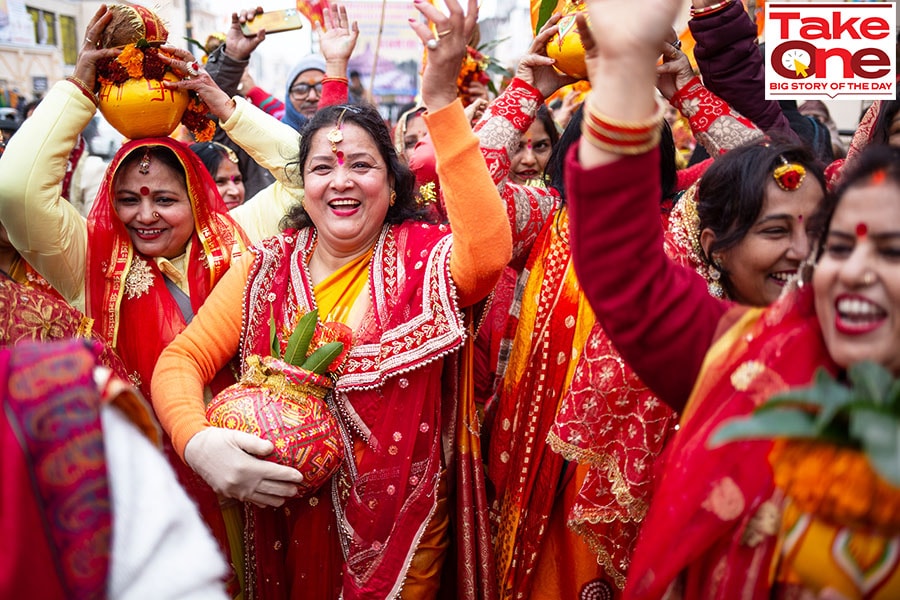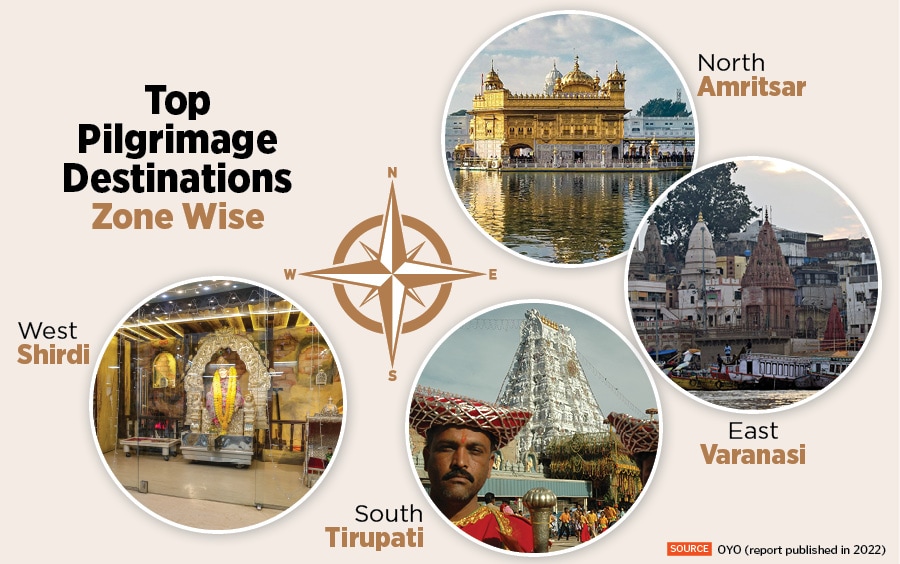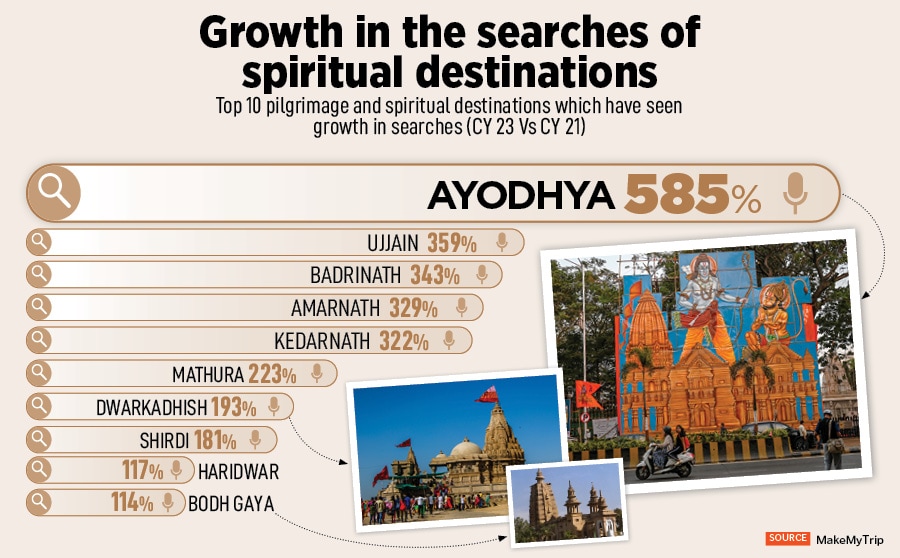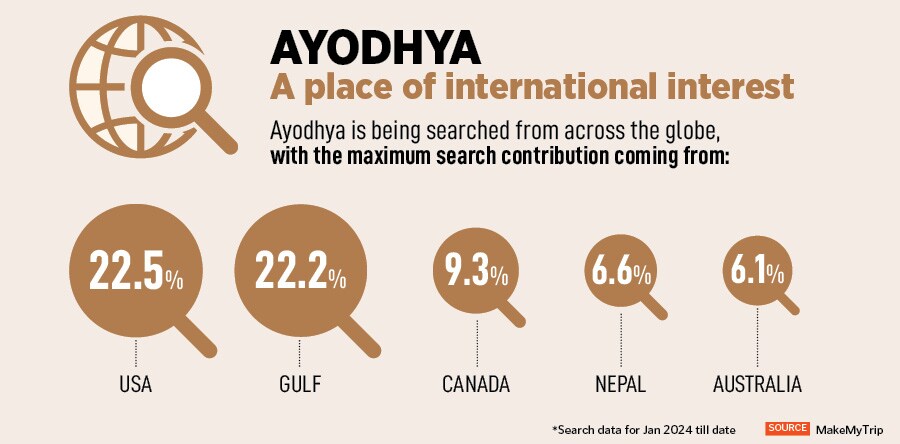
Next stop: The land of God
With the inauguration of the Ram Temple in Ayodhya on January 22, the country is seeing a rise in spiritual tourism. According to experts, this phenomenon will see further growth as more and more travellers are looking to add religious destinations to their holiday list
 Women engaged in preparation and celebration ahead of the Ram Temple inauguration in Ayodhya. Image: Madhu Kapparath
Women engaged in preparation and celebration ahead of the Ram Temple inauguration in Ayodhya. Image: Madhu Kapparath
“You can feel something divine even in the air in Ayodhya. The whole city looks and feels like the era of Lord Ram,” says 41-year-old Vidha Lal who recently came back from her visit to Ayodhya, a small town of about 30 lakh people, on the banks of Sarayu river, in Uttar Pradesh. Lal, a professional Kathak exponent, whose visit to the spiritual town was primarily to perform at one of the many pre-inaugural events happening in Ayodhya, says that her desire to witness the preparation of welcoming Lord Ram was fulfilled, thanks to an invitation for a dance performance by the government.
As the temple inauguration nears, over 45 lakh visitors are planning to visit Ayodhya in the coming days. Leading up to the inauguration, Ayodhya's hotels are fully booked, enabling them to leverage increased pricing. Occupancy rates have risen 80 to 100 percent, resulting in substantial price hikes, reaching up to Rs 70,000/night in select hotels, according to travel agency company EaseMyTrip. Not just in Ayodhya, spiritual tourism in India for destinations such as Puri, Amritsar, Varanasi, etc. has seen a significant boost. According to a report by Booking.com, 70 percent of Indian travellers stated that they were seeking spiritual and mindfulness getaways to recentre the mind.
According to PP Khanna, board member of Federation of Associations in Indian Tourism & Hospitality (FAITH), domestic tourism majorly consists of pilgrim tourists which is approximately 60 percent of the total domestic tourists travelling across the country. “Spiritual tourism is growing tremendously and most of the pilgrim centres are receiving moderate to heavy footfalls of pilgrim tourists,” says Khanna who believes that Ayodhya will become a top draw for NRIs living abroad, and will eventually become part of tour itineraries of foreign travellers.

Travel portals such as MakeMyTrip, EaseMyTrip, and Cleartrip are seeing a spike in travel bookings for religious centres such as Bhubaneswar, Tirupati, Dehradun, and Trivandrum, among others. According to Prahlad Krishnamurthi, chief business officer, Cleartrip, the growth of spiritual tourism as a segment has been noteworthy, particularly post-Covid, compared to the pre-Covid period, with a significant increase of 62 percent in bookings. “There has been a remarkable 1.6x spike in segments in places renowned for spiritual tourism.”


.jpg?impolicy=website&width=122&height=70)







